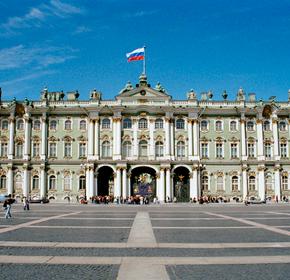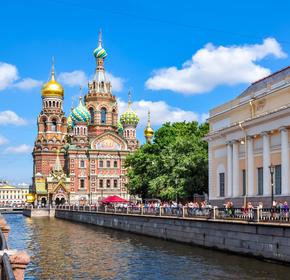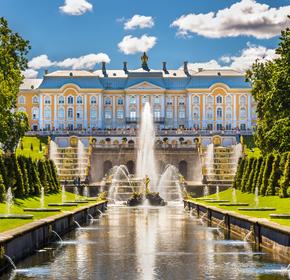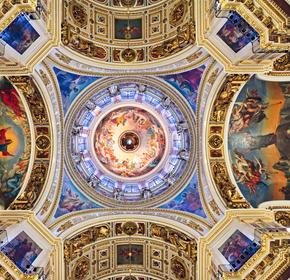
Saint Petersburg travel guide
Saint Petersburg Tourism | Saint Petersburg Guide
You're Going to Love Saint Petersburg
Saint Petersburg is the second-largest city in Russia and widely regarded as one of the most beautiful destinations in Europe. With a population of more than 5 million, it has a huge historic city center, which is now a UNESCO World Heritage Site. This is a city of architecture and culture but the nightlife is pretty great, too.
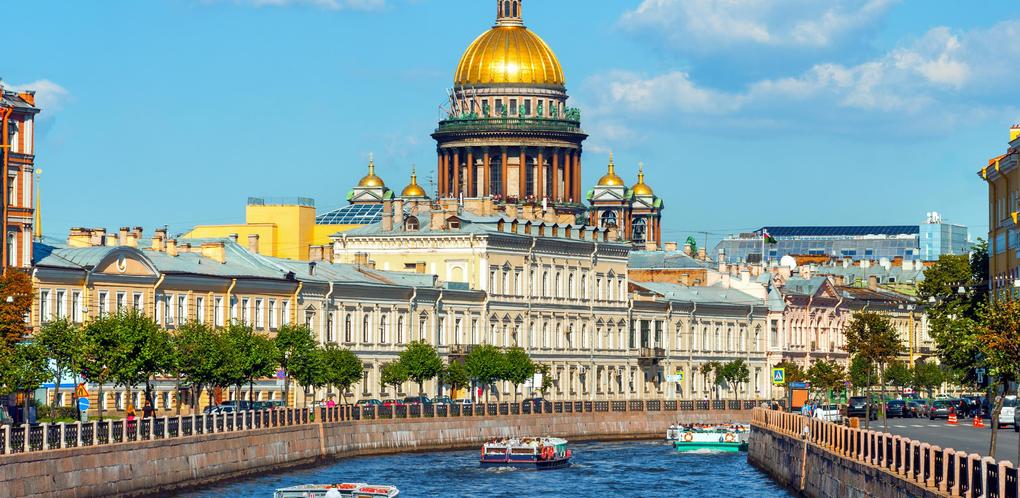
Top 5 Reasons to Visit Saint Petersburg
1. The Hermitage Museum/The Winter Palace
This is one of the world's greatest museums, with more than 3 million exhibits. It has countless priceless artworks by the great masters and the building itself is fabulous.
2. Opera and Ballet
Seeing an opera or ballet at the Mariinsky Theatre is one of the city's great treats.
3. Rooftop Tours and Restaurants
There are no towers in Saint Petersburg, so for the best views you need to take a rooftop tour or eat in one of the rooftop restaurants.
4. Canal Tours
This is a more leisurely way to see the best of the city and enjoy its beautiful network of canals.
5. Architecture
The city contains some astonishing architecture and just walking in the historic center allows you to enjoy some of the most splendid buildings.
What to do in Saint Petersburg
1. Hermitage Museum: Great Art, Great Architecture
The State Hermitage Museum housed in the Winter Palace is the most popular tourist attraction in Saint Petersburg. The museum has more than three million exhibits and it is said that it would take 11 years to view every single one of them, so you couldn't ask for a better excuse to plan many return visits to the city. The Winter Palace itself is perhaps the most famous building in this world-renowned city. It has its origins in a wooden house built for Peter the Great in 1708 but was not completed until the reign of Catherine the Great in 1762. The vast structure on Palace Square is simply breathtaking and the ornate facade makes for a great souvenir photograph.
2. Church of the Savior on the Spilled Blood: Monument to a Fallen Tsar
The Church of the Savior on the Spilled Blood was built to mark the site where the Tsar Alexander II was killed in 1881 by an anarchist's grenade. A shrine inside the church marks the exact spot on the road where the Tsar fell, with elaborate decoration contrasting the simple cobblestones of the original road on the floor of the shrine. The church cost an estimated 4.5 million roubles at the time of its construction, and was paid for by the Tsar's son, Alexander III, and other wealthy donors. You will immediately notice that the architecture is different from other buildings in the city, recalling the medieval Russian style of St. Basil's Cathedral in Moscow.
3. Petrodvorets: The Russian Versailles
Petrodvorets, also known as Peterhof, is a complex of palaces built on the orders of Peter the Great. The palaces and gardens are often called the "Russian Versailles" and are part of Saint Petersburg's UNESCO World Heritage Site. The fountains are particularly impressive and use gravity rather than pumps to power the jets of water. The beautiful palace interiors and ornate formal gardens provide a wonderful backdrop to one of the most inspiring areas in the city.
4. Summer Garden: Peter the Great's First Palace
Peter the Great founded the Summer Garden in 1704. The Tsar was also involved in the planning of the garden along geometric principles. There are lots of statues imported from Europe, along with fountains and rare imported plants. It was the site of lots of courtly activities for the Russian aristocracy at the time, serving at the location for many balls and parties. This is also the site of the Summer Palace, a relatively modest building which was the first palace built by Peter the Great in the city. It remains almost unaltered and provides visitors with a glimpse of what imperial life was like in Russian 300 years ago.
5. St. Isaac's Cathedral: A Dome of Pure Gold
St. Isaac's Cathedral is the largest Orthodox basilica in the world and the fourth-largest cathedral. It was built from 1818 to 1858 and one of its most striking features is the dome, plated in pure gold and rising 333 feet into the Saint Petersburg skyline. The interior features a host of intricate mosaics and ornate masonry. Once inside you can climb the 300 steps to the colonnade for some wonderful views across the city.
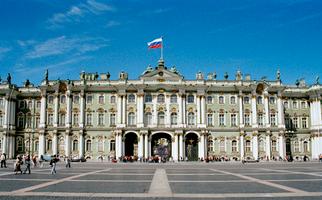

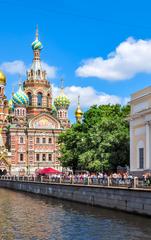
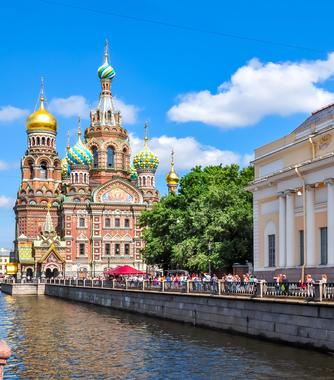
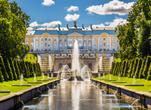
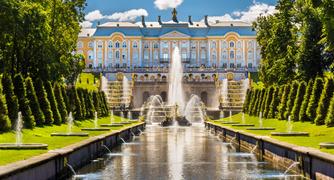
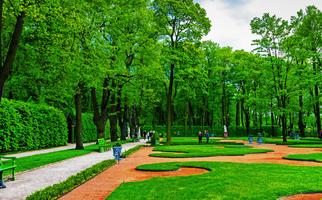
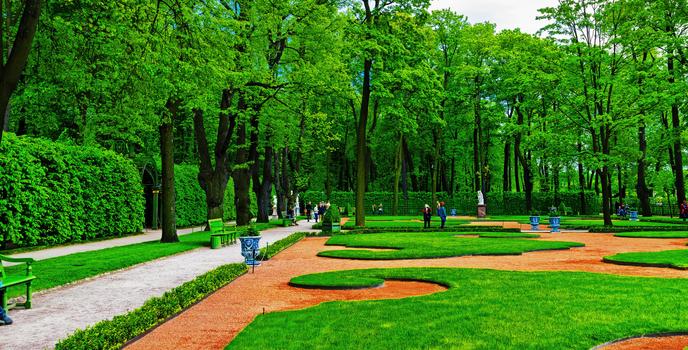
1. Hermitage Museum: Great Art, Great Architecture
The State Hermitage Museum housed in the Winter Palace is the most popular tourist attraction in Saint Petersburg. The museum has more than three million exhibits and it is said that it would take 11 years to view every single one of them, so you couldn't ask for a better excuse to plan many return visits to the city. The Winter Palace itself is perhaps the most famous building in this world-renowned city. It has its origins in a wooden house built for Peter the Great in 1708 but was not completed until the reign of Catherine the Great in 1762. The vast structure on Palace Square is simply breathtaking and the ornate facade makes for a great souvenir photograph.
2. Church of the Savior on the Spilled Blood: Monument to a Fallen Tsar
The Church of the Savior on the Spilled Blood was built to mark the site where the Tsar Alexander II was killed in 1881 by an anarchist's grenade. A shrine inside the church marks the exact spot on the road where the Tsar fell, with elaborate decoration contrasting the simple cobblestones of the original road on the floor of the shrine. The church cost an estimated 4.5 million roubles at the time of its construction, and was paid for by the Tsar's son, Alexander III, and other wealthy donors. You will immediately notice that the architecture is different from other buildings in the city, recalling the medieval Russian style of St. Basil's Cathedral in Moscow.
3. Petrodvorets: The Russian Versailles
Petrodvorets, also known as Peterhof, is a complex of palaces built on the orders of Peter the Great. The palaces and gardens are often called the "Russian Versailles" and are part of Saint Petersburg's UNESCO World Heritage Site. The fountains are particularly impressive and use gravity rather than pumps to power the jets of water. The beautiful palace interiors and ornate formal gardens provide a wonderful backdrop to one of the most inspiring areas in the city.
4. Summer Garden: Peter the Great's First Palace
Peter the Great founded the Summer Garden in 1704. The Tsar was also involved in the planning of the garden along geometric principles. There are lots of statues imported from Europe, along with fountains and rare imported plants. It was the site of lots of courtly activities for the Russian aristocracy at the time, serving at the location for many balls and parties. This is also the site of the Summer Palace, a relatively modest building which was the first palace built by Peter the Great in the city. It remains almost unaltered and provides visitors with a glimpse of what imperial life was like in Russian 300 years ago.
5. St. Isaac's Cathedral: A Dome of Pure Gold
St. Isaac's Cathedral is the largest Orthodox basilica in the world and the fourth-largest cathedral. It was built from 1818 to 1858 and one of its most striking features is the dome, plated in pure gold and rising 333 feet into the Saint Petersburg skyline. The interior features a host of intricate mosaics and ornate masonry. Once inside you can climb the 300 steps to the colonnade for some wonderful views across the city.








Where to Eat in Saint Petersburg
Pirogi on Nab. reki Fontanki offers dishes of traditional Russian pies and salad for around ₽200. Austeria on Iohann Alley, by the Peter and Paul Fortress, has high-quality Russian cuisine for around ₽1,150.
When to visit Saint Petersburg
Saint Petersburg can get very cold in the winter. Daylight is also short, at less than six hours. Summers are wet and warm but spring is perhaps the best balance of dry and cool.
How to Get to Saint Petersburg
Plane
Saint Petersburg is served by Pulkovo Airport (LED), which has many international connections. It is 12 miles south of the city center and the number 39 bus will take you there for ₽40 in about 30 minutes. A taxi into the center will cost around ₽1,000.
Train
Saint Petersburg has no fewer than five main train stations. There are many domestic and international connections and the high-speed service will take you to Moscow in five hours for ₽2,000.
Car
Driving in Russia can be challenging, with Cyrillic road signs and some poor road surfaces. The main M10 motorway runs from the Finnish border to Saint Petersburg and Moscow and is a little better than most.
Bus
Saint Petersburg's main bus station is Avtovokzal, which has extensive connections to the Baltic States and major European cities.
Airports near Saint Petersburg
Airlines serving Saint Petersburg
Where to stay in Saint Petersburg
Palace Square - this is Saint Petersburg's historical and cultural center and is home to the beautiful Winter Palace.
Popular Neighborhoods in Saint Petersburg
Nevsky Prospekt - this neighborhood has some of the best hotels and shopping in the city and also some good bars.
Vasilievsky Island - Vasilievsky Island is an artsy district with lots of theaters and is home to the Saint Petersburg State University and Menshikov Palace.
Where to stay in popular areas of Saint Petersburg
Most booked hotels in Saint Petersburg
How to Get Around Saint Petersburg
Public Transportation
Saint Petersburg has a huge subway system with frequent trains and a flat fare of ₽35. Buses and trolley buses cost from ₽30.
Taxi
Taxis are plentiful but watch out for scams. The initial fare is ₽200 and then ₽30 per mile.
Car
Driving in Saint Petersburg is relatively trouble-free within the city and car rental is widely available from around ₽3,000. Hertz and Avis outlets can be found in town.
The Cost of Living in Saint Petersburg
Shopping Streets
The area around Nevsky Prospekt is home to most of the big stores. Here you will find fashion, leather goods, jewelry, and technology stores.
Groceries and Other
24-hour supermarkets are common around the city. Milk is around ₽60 per quart and a loaf of bread is ₽44.
